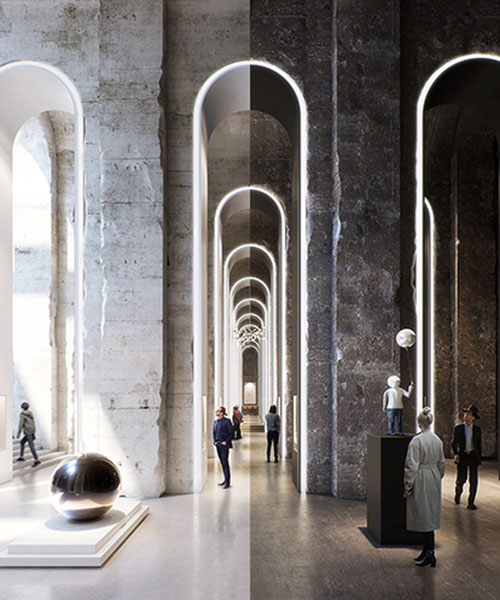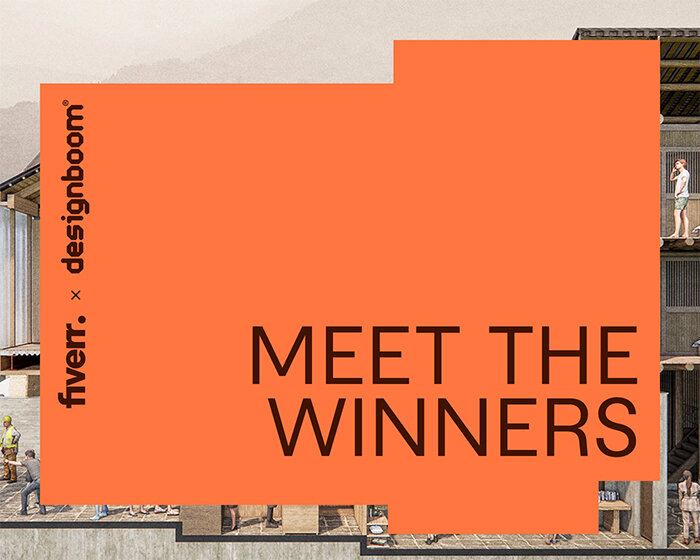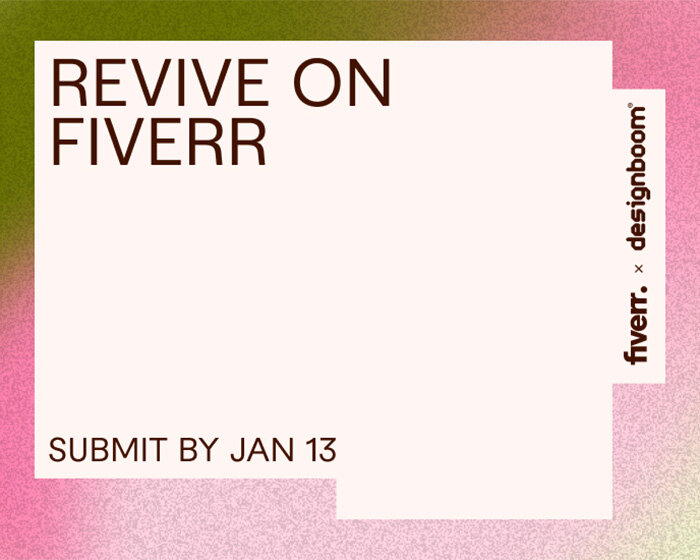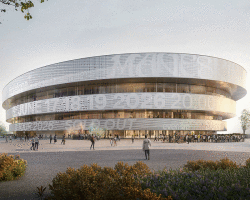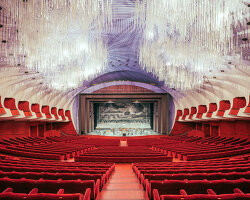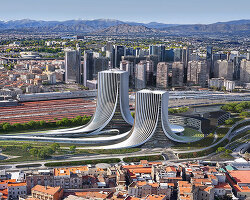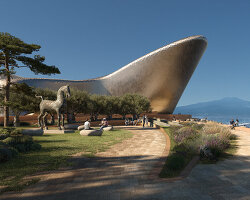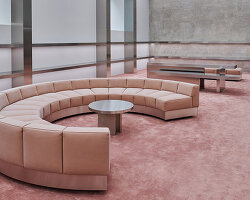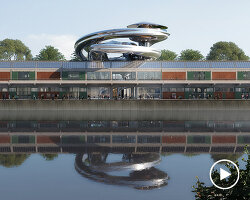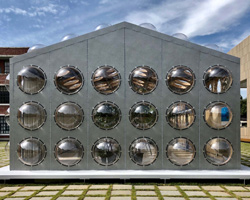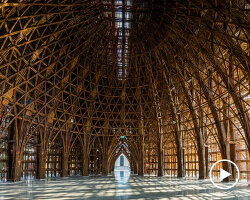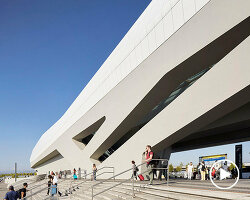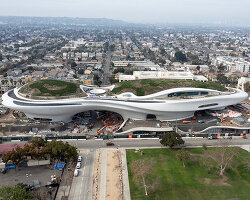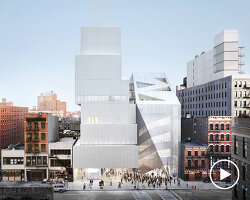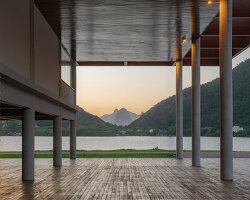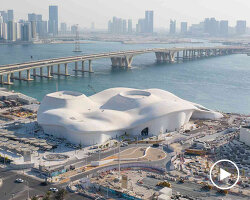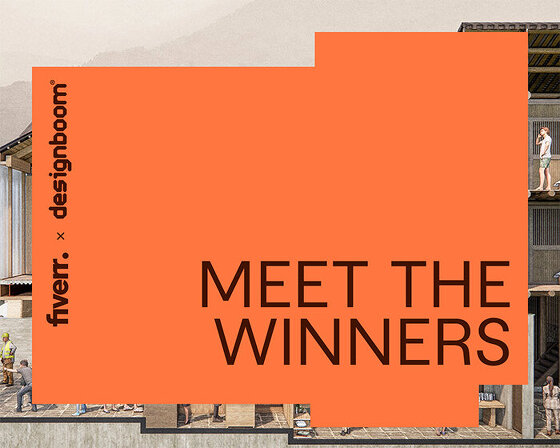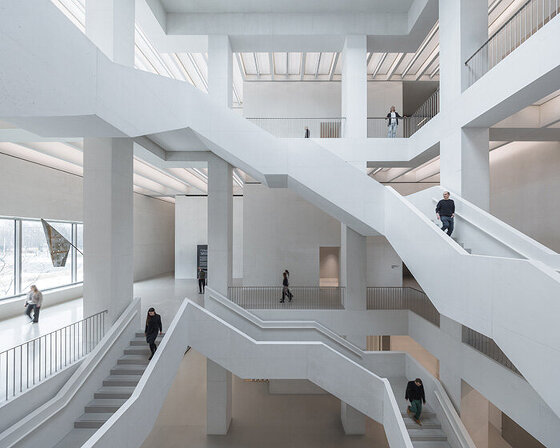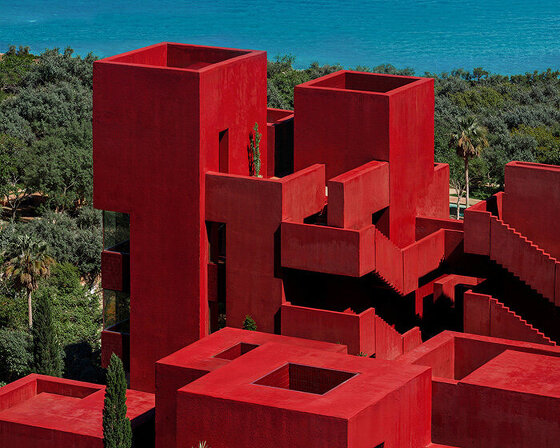submitting their proposal for a competition aiming to repurpose the roman ruin of piscina mirabilis in naples, italy, hong kong-based architecture firm bagua+bhava has transformed the iconic ancient water reservoir, into a new contemporary art museum. built by emperor augustus in the 1st century AD, piscina mirabilis is one of the largest ancient roman freshwater cisterns. after twenty centuries, it has been established as a magnificent architectural wonder of the ancient world.

all images courtesy of bagua+bhava
‘when talking about emperor augustus and the piscina mirabilis, it is always thought (…) to mention julius caesar’ bagua+bhava shares. julius caesar was a roman general and statesman who played a critical role in the events that led to the demise of the roman republic and the rise of the roman empire. as a result, he became one of the important elements of the new museum.
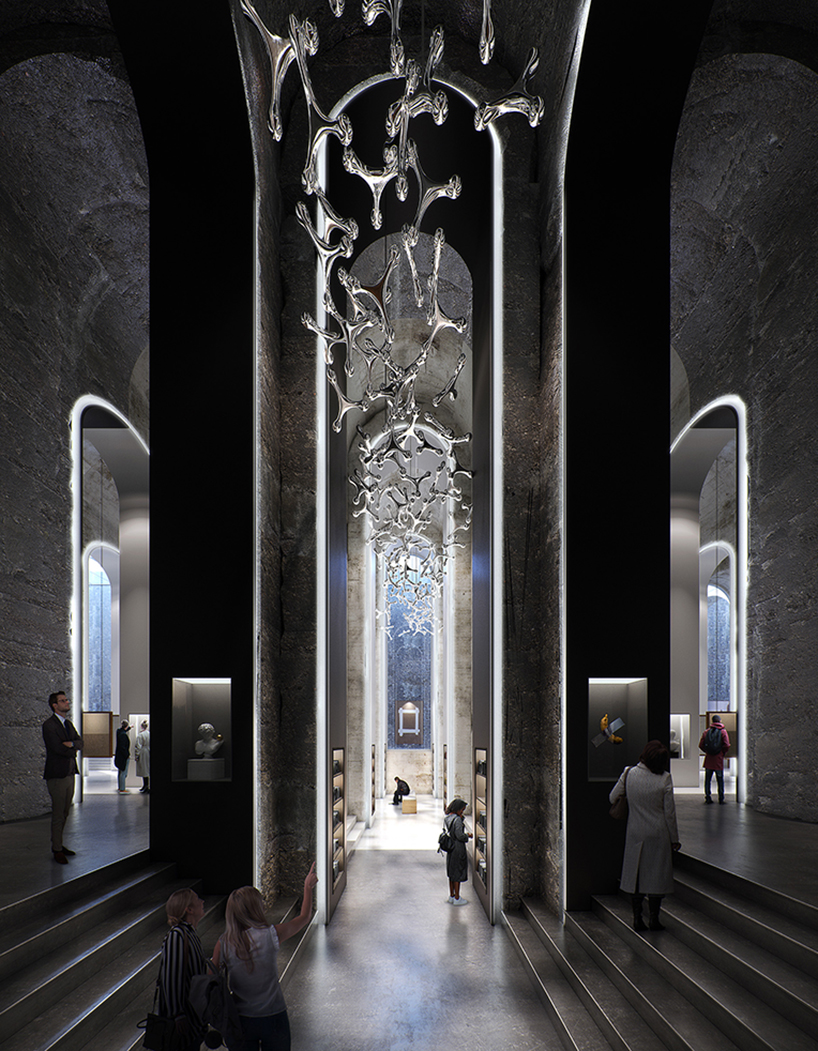
during the design process by bagua+bhava, a question emerged about how to balance the design of the old cistern and the contemporary art museum. as visitors walk within the space, it seems like twenty centuries pass in just a few minutes’ time; from the ancient reservoir to the new museum. therefore, the architects decided to use ‘time’ as the main idea of the project. ‘no matter the past or the future, even the present, the piscina mirabilis is an important history for people all over the world’ the studio explains.

merging ‘time’ with the historical background of the building, the julian calendar became the core element of the overall design and narrative concept of the project. the reformation of the roman calendar that was proposed by julius caesar in 46 BC, depicts january as the roman god janus, with two faces, one looking into the past, the other into the future. just like the past is the piscina mirabilis and in the future, it becomes a new art museum. the museum is divided into two parts; the white zone, and the black zone – representing the past and the future.

the white zone focuses on the paintings and the artists such as eugenia vanni, francesco clemente, and serena vestrucci. meanwhile, the black section focuses on sculptures such as the works by willy verginer, valerio berruti, and arcangelo sassolino. in general, the artwork display planning is very simple within the new museum, dividing the interior into 5 paths. path A focuses on the paintings, while paths B and C showcase the small and large sculptures, accordingly. finally, path D includes the feature sculpture by loris cecchini which is exhibited hanging from the ceiling.

as far as circulation is concerned, there are three main routes for the audience to follow. upon entering the museum, visitors can follow the red path, leading to the area between the small sculpture and large sculpture sections. after that, they can walk through the green path which mostly focuses on the paintings until the bar space is reached. the middle path is the blue one which guides the audience to the book shop. here, people can read, socialize, rest, and relax. 



project info:
name: reuse the roman ruin – piscina mirabilis
architecture office: bagua+bhava
design team: gavin leung & suki so
client: re-use italy
location: piscina mirabilis, bacoli, naples, italy
area: 1,450 sqm
designboom has received this project from our ‘DIY submissions‘ feature, where we welcome our readers to submit their own work for publication. see more project submissions from our readers here.
edited by: myrto katsikopoulou | designboom
